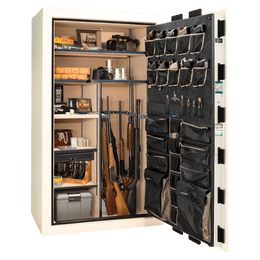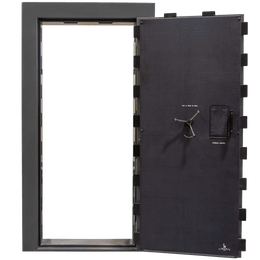One of the most hotly debated questions in the deer hunting community (possibly even more controversial than Richard Petty vs. Dale Earnhardt, Led Zeppelin vs. the Beatles, or Coke vs. Pepsi) is that of stand/still/ambush hunting versus spot-and-stalk hunting.
- Which is better?
- Does one have advantages over the other?
- Which potentially produces the best chance of success?
Let’s go over the basics, the pros, and cons of each type of deer hunting, and see if we can shed some light on the subject.
What is spot and stalk deer hunting or stalking?
Stalking, often called "spot-and-stalk" hunting, is a type of hunting where you stay mobile, or at least on your feet, for the main part of the day and try to spot a deer either at longer distances using binoculars or at closer distances as you walk near prime areas of deer activity.
[Image courtesy of MeatEater]
Ideally, you’ve done some scouting and have noted several places in your selected hunting area where deer may appear at certain times of the day, and you can move to one or more of them throughout the day. You keep your eyes peeled for deer while moving slowly through an area, or in some locales, you "glass" or spot the deer from several hundred yards away and then attempt to move or "stalk" close enough for an ethical shot.
In the West, mule deer and black-tailed deer in open areas and mountainous terrain may require a more spot-and-stalk approach and a pretty significant hike can often be involved.
What is still or stand deer hunting?
Stand hunting (using a permanent or temporary tree stand or hunting stand), still hunting, or "ambush" hunting are all similar types of hunting where you set up in one location and wait for the deer to come to you. Treestand or elevated blind hunting is what we’re going to focus on in this article, but many of the principles, pros, and cons of stand hunting also apply to still or ambush hunting from a static position on the ground. More white-tailed deer are taken using stand hunting than any other method, and still or stand hunting is often favored in heavily wooded areas where lots of trees and brush limit open views.
Spot-and-stalk hunting pros and cons
Those who favor the spot-and-stalk method for hunting deer have determined that the advantages outweigh any disadvantages. Let’s go over the pros and cons of this type of hunting to help you decide if it’s right for you.
Advantages of spotting and stalking
-
If one area isn’t productive, you can quickly move to another
A spot-and-stalk hunter typically scouts out an area well before a hunt and is familiar with multiple potential locations where deer may appear throughout the day. A creek crossing, a bedding area, a firebreak or clearing, a regular source of food, a game trail, some antler scrape marks, etc. The spot hunter’s plan may include investigating each one of these areas at some time during the day. By checking five or six places in a day like this, many times, the hunter can encounter feeding, bedding, and/or traveling bucks. -
You can potentially track down a moving deer
A stand hunter who sees a nice buck just out of range moving away will have to let him go, but a mobile, stalking hunter can potentially flank the deer, moving quietly downwind, and approach him from another direction. -
Less setup time and less gear to carry
A stand hunter either needs to set up a stand the day before a hunt (where legal) or drag the stand and all related gear along on the morning of the hunt, set it all up, and hopefully not scare all the deer away in the process. A spot-and-stalk hunter, on the other hand, just needs knowledge of the area, whatever hunting/survival gear he/she wants to carry along, and a bow or firearm. -
You see more area
Those who aren’t super successful hunters can still enjoy the sport, even if it’s just hiking with a gun. Spot-and-stalk hunters will see much more nature and beautiful vistas than those who sit in one place. -
It can be an adrenaline rush
Many hunters prefer being on the same level with the game they are stalking and feel it’s a more exciting, fulfilling, and potentially more ethical way to hunt. It requires you to find and track down the deer rather than simply waiting for it to come to you.
Potential disadvantages of spot-and-stalk deer hunting
-
More physically demanding
Spotting and stalking mean you’re likely on your feet all day (or most of it), and if you’re not in hunting shape, it can wear you out. -
More exposed to weather
If you’re on an open hillside or field when the storm blows in, you’ll be out in the weather more than the stand or blind hunter who potentially has a waterproof shelter and a heat source. Even stand hunters without any shelter have the protection of the branches and leaves above them. -
Noise and movement can spook deer.
One of the things that makes stalking exciting is the same thing that makes it difficult. If you’re not patient or if the leaves on the ground are dry, it can be very difficult to avoid spooking deer as you approach. -
Generally, stalking is not as productive.
You might think of stalking-type hunting similar to flyfishing: It’s what many consider the purest form of the sport, and it’s more exciting to meet the quarry on its terms. But regarding your chances of getting a deer, stand hunting is usually considered more successful overall.
Stand hunting pros and cons
For many hunters, stand hunting is the only way to go. Let’s review the advantages and disadvantages of this type of deer hunting.
Advantages of stand hunting
-
You have a place to sit or stand and observe, potentially out of the weather.
Sitting quietly and paying close attention as the deer approach is some people’s idea of the ideal hunting situation. -
More stable shooting platform
Even if all you have is a tree to lean against or a harness to lean into, that’s much better than a shooter who has to shoot offhand after stalking. -
Less physically demanding
This doesn’t include lugging and setting up your stand, of course. Once your stand is in place, you’re golden. Relax and enjoy your day hunting. -
Above the deer’s line of sight
Depending on the terrain and cover, a stand as low as 10 feet high might be enough to escape the deer’s line of sight. Or you may need to go up 15 or 20 feet. If you do it right and hold still, you can get deer to walk right up on you without noticing you because they are not naturally conditioned to check for predators in the trees. -
A potentially better view of a larger area compared to ground/still hunting
If you’re elevated in a stand, you can get a better overview of the hunting area, depending on the leaf and brush cover where you’re hunting. You may see deer that someone posted up on the ground might miss. -
You can trim brush and branches to clear shooting lanes
If you set up your stand early, you can take the time to clear brush and leaves from your primary shooting lanes to your selected hot spots where you expect deer to appear. This can make a difference. -
You can pre-range different landmarks to make a more accurate shot
If you’ve scouted your stand location and potentially set up your stand before your hunt (where legal), you can also note any landmarks and range those targets to get a more accurate shot at a deer. This is especially useful for bow hunters. -
You have a known location in case of trouble
You can GPS your spot and let others know exactly where you are in your stand. If something bad happens, people can find you a lot easier than a stalking hunter who may cover several miles of ground in a day. -
Potentially a better chance of bagging a mature buck
Some hunters will swear you have better odds of bagging a nice trophy from a good stand setup than spot and stalk techniques, particularly in the East and Midwest. Bambi’s dad is generally pretty wise and spooks easily, and even the most patient stalker can make noise and certainly exhibits movement. If you ask hunters who regularly use stands and stalking, they will most often tell you they have more success and have killed more deer from a stand. (Of course, your experience may vary.)
Cons of stand hunting
-
Heavy and difficult to set up
Many styles of temporary/portable tree stands are quite complicated and heavy and can be difficult to set up. In the best cases, it’s a hassle, though you might find it worth the trouble. -
Your stand might be occupied by someone else
Depending on the area you hunt, you may find someone else beats you to your stand set up previously, and you’re out of luck. -
Potentially dangerous
Around 6,000 hunters are injured (and some killed), falling out of tree stands yearly. Wear your safety harness and learn how to use it correctly. -
May not provide the best view
Depending on your local terrain, brush, leaves, and trees could block many good looks at deer. In some cases, you might be better served sitting on a stool at the base of a tree, with a view through the underbrush below the leaf canopy. -
Potentially inconsiderate to other hunters by shutting down productive hunting lanes
We all have shown up to our favorite hunting spot, only to find a tree stand set up right where we were planning to post up for the day. The "first come, first served" approach may be legal (in some states), but it still doesn’t make for a happy hunt.
Now that you know the pros and cons of each type of deer hunting, let’s go over some proven tips for success in stalking and stand hunting.
Best deer stalk hunting tips
-
Keep it quiet
Deer have excellent hearing, and sound can travel far in open areas. Check your pockets for loose change, keys, and rattling stuff. Check your pack and strap down any loose objects. Check your bow or rifle sling for squeaky or clanky attachments. Ensure your boots don’t squeak and your clothing doesn’t rustle. Speak quietly if you’re hunting with a buddy or using radio communicators. Try not to break twigs or step on crispy leaves as you move. -
Pay attention to the wind, and mind your scent
Deer can smell unmasked human odor from ¼ mile away, so pay attention to where you are in relation to your projected deer area and which way the wind is blowing. If you’re upwind, move. How crazy you want to get with scent-masking formulas is up to you, but generally, the more neutral and scent-free you can be, the better your chances. -
Scout your area well before your hunt
You might get lucky hunting a new area without scouting it beforehand, but chances are much better if you’ve checked it out well and glassed a lot of the area in advance. You’ll have a better idea of potential avenues of deer movement, watering spots, sources of food, bedding areas, pinch points, draws, etc. and can focus on those areas. -
Be aware of the background behind you
Deer have very good eyes for detecting movement, and it’s easier to spot you when you’re on a ridgeline or open country where the background behind you is uniform in color (sky, grain field, etc.). When possible, place yourself at a higher elevation from the deer, and when you move, keep a good section of multi-colored background behind you. -
Be patient and move slowly
Even if you favor being mobile throughout the day and want the best chance of success when spot-and-stalk hunting, it’s best to move very slowly. This is especially important in wooded or farmland-type hunting areas, where you have a better chance of jumping or spotting a deer relatively close to you. Slowing it down can improve your chances for several reasons. It forces you to pay attention to what you’re seeing, it reduces noise, and it reduces your potential scent from sweating due to exertion. All of these factors help you get closer to a nice doe or buck bedded down during the day's heat or grab a nice snack of acorns. -
Stay low
If you’re hunting cornrows, crouch walk so your head is below the stalks. If you’re stalking a mulie in fairly open country, hunching your head or even crawling can make the difference. If you get low, you’re harder to see. -
Hike regularly in the off-season
If you’re mostly a desk jockey and don’t exercise much, a 12-hour stalking hunt can feel like a marathon, particularly if you’re heading to higher elevations in the western US. Do some cardio, or at least go for some regular hikes, in the months before your hunt so your body can become accustomed to the exertion. -
Keep your gear as light as possible
Like the man said, ounces equal pounds, and pounds equal pain. Don’t overpack for your stalk. Carry the essentials, but the lighter you get, the happier you’ll be at the end of a long hike.
Tips for tree stand hunting
-
Learn the laws and regulations for stand hunting in your area
Make sure you check the regulations regarding the use of tree stands in the area you plan to hunt. Different states, and even different categories of hunting land in a particular state, may have different rules regarding hunting stands or blinds. In Utah, for example, stands are allowed, but they must be the portable type (you can’t build a stand and leave it). Idaho’s rules are limited to lands managed by the Idaho Department of Fish and Game: “Idaho Code and IDFG Commission rules [do] not address tree stands for hunting, except on lands owned by IDFG. On our WMA's, tree stands are restricted to construct blinds, pits, platforms, or tree stands where the soil is disturbed, trees are cut or altered, and artificial fasteners, such as wire, rope, or nails, are used. All blinds shall be available to the public on a first-come-first-served basis. Portable manufactured blinds and tree stands are allowed but may not be left overnight. You must contact the USFS and BLM for information about blinds and tree stands on lands they manage.” In Iowa, there’s a new law requiring you to affix a metal tag, including your hunting license number, to your tree stand if you are leaving your stand overnight or be subject to a $20 fine. This is intended to help prevent lawsuits if someone else uses your stand and is injured. (It’s legal to leave stands up overnight in Iowa, and it’s also legal to use someone else’s stand if you get there first. Silly, we know.) -
Try out your stand before your hunt
You’d be surprised how many hunters buy a new tree stand and haul it out into the hunting area for the first time the morning of their hunt, only to learn it’s much more complicated to set up than they thought or that they’re unable to get it up into the tree at all by themselves. Be sure to test your stand on an actual tree and climb up into it before you try to hunt from it all day. -
Keep it quiet and mind your scent
If you’re sitting in your stand all day, you have little excuse for making any noise. If you use a walkie-talkie or radio to communicate with hunting partners or friends, keep it as quiet as possible. Don’t bring smelly, noisy candy, chips, or other food wrapped in crinkly plastic bags. Make your movements slow and smooth, even if you’re reaching for your binoculars or scratching an itch. Any sudden movement will attract a deer’s attention. -
Clear shooting lanes of brush, limbs, and leaves
Ideally you can choose your tree well before your planned hunt, and you might even be able to set up your stand the day before (if it’s legal where you hunt). This gives you time to observe possible shooting lanes and clear out leaves, branches, and brush for a clean shot. -
Be patient and wait for a good shot
You’ve done the hard work and gotten a good setup. Now don’t get jumpy and take a shot that’s not ethical. Wait quietly until your deer is in one of your clean shooting lanes, and make it count. - Use the safety harness, and have a way to climb back up (or down) if you fall onto your rope
If you get excited and lean too far off your stand, you can find yourself dangling from a safety line 15 feet above the ground and potentially injured from the fall. Well, now what? Can you climb a thin nylon rope wearing all your gear? Doubtful. Carry an emergency ascending tool or consider a fall-arresting device.
Store your hunting gear in a Liberty Safe
Whether you try stalking your deer or posting up in a stand, we hope you have a great, safe, successful hunt. Whatever you choose, keep all your expensive hunting gear and weapons secure in a Liberty safe. Check out our online catalog, or find a dealer near you. Good hunting!
*Made in the U.S.A. from U.S. and Global Parts.







